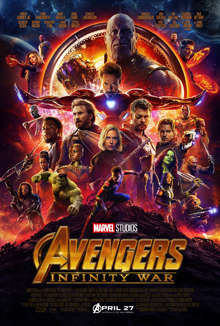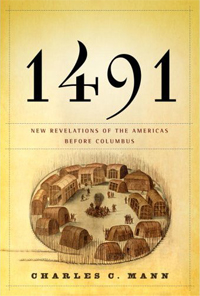(Picture from here.)
Man, it's been a while.
Yes, I’m alive. Yes, I still do this. But it’s been a crazy busy summer and I’ve had some shoulder issues that make sitting and writing difficult. Consequently, I’ve been giving my own fiction priority.
But it’s getting better.
It was a very, very strange summer for the farm,
too.
Things looked pretty good back in May. Good, warm
weather. Bees out—mostly. They missed the Cornelian Cherries. The CC’s came out
in a cold late April and the little guys just weren’t up for it. Maybe next
year.
Not much in the way of caterpillars. Everything
got pollinated. Fruit was set and *BAM!* Three weeks of cold, wet weather.
Since we have two cedar trees, we have a cedar
apple rust reservoir. Since I really like those trees—they remind me of
Missouri—the problem isn’t going away anytime soon. It doesn’t help that
sometime about forty years ago planting cedar trees was very common. I have no
idea why. There is a grove of them in the nearby state park. Several houses
have little lines of them in the front of the house. They don’t seem to
propagate up here and now all those groves and lines are dying and being hauled
out. It doesn’t help that they are not so fashionable now. But I take care of
mine.
Every year we have a little apple rust on the
apple trees. Nothing major. But *this* year, the stuff went nuts: all of the
lower leaves were covered with weeping sores. Really ghastly stuff. And, lo and
behold, *this* year is when we get apples. A real crop for the first time in
twenty years. Yay.
In previous years, black knot hasn’t been much of
a problem for the crop but did major damage to the plum trees. Then the three
weeks of rain. Every plum showed new black knot and even the nearby apricot got it. I didn’t even know that
was possible.
We’d had enough. We had a prune plum that seemed
to be the main reservoir that had already infected the pluot next to it. We ripped out both of them.
Then, we went through the remaining plums and cut off all of the black knot
branches and burned them. We sprayed a relatively mild fungicide over the
remainder. This winter it’s dormant spray: a fungicide so arcane and powerful
it will kill the tree if it wasn’t already asleep. Go team.
In the spring, Wendy hatched about twenty five
eggs. When the weather warmed up we brought them out into the chicken house.
They’re fun to watch. Our dog, Penny, thought so, too. She’s only eleven pounds
but turned out to be more than a match for a half dozen chicks. We were all
pretty sour about that. Wendy didn’t say much but I think the dog was lucky to
live. A few more eggs to hatch.
It warmed up in June and we started getting
peppers and tomatoes. I kept a close eye on the fruit trees. I put deer cages
around several young ones and they survived the winter fairly well. The ones
that I didn’t protect were severely eaten. More deer cages in production. One
nectarine died mysteriously: came out in leaf and blossom and went suddenly
brown. No evidence of disease. We’re still looking at it.
Peaches came in well. We have about forty pounds
in the freezer. The apples came in at about sixty pounds. They look horrible:
knobby and discolored with a black fungus pattern. We waited for a bit to figure
out what to do about the apples.
Then, in record heat in August and early September
followed by *more* cold rain.
We harvested the garden. We tried a blue corn we
got at the Topsfield Fair last year but it
didn’t do well. Back to Bloody Butcher next year. I always get
a kick watching people slow down to look at the eleven foot plants.
The grapes did very well. I got about fifty pounds
from the Concords alone. Froze them. Thawed them and now I have seven gallons
of Concord wine cooking in the kitchen. I make a good Concord wine. The batch I
made up last year turned into Concord wine dry champagne. Very, very good. My
fundamental rule for all things that come from the earth: everything is (or can
be) alcohol.
Then, there were all those apples.
A couple of years ago I built a solar dehydrator
but it actually requires the sun and we weren’t getting much. I’d follow my go
to rule and turn them into alcohol but apple wine and Wendy don’t get along
well. I broke down and bought a new dehydrator. Which I really, really like. In
addition, I had a Victorio apple peeler I had from God knows where. I clamped that puppy down and started making spiral
cut apples which I then turned into rings. This appliance is fast. I blew through fifteen pounds of
apples in less than 15 minutes. It took longer to place the rings in the
dehydrator trays than it did to make them. It works on potatoes, too.
Wendy pointed out that the Victorio had a specific
thickness that was nice for eating but less nice for cooking. She felt that
dehydrated cooking apples needed to be thicker.
Now the leaves are falling fast. The only outdoor
fruit left are the persimmons—which make a terrific wine, by the way. Tastes
like brandy. Everything is alcohol.
We have some plum trees to replace the ones we
pulled out. We’ll be planting them as soon as they go dormant and hope for the
best. In the greenhouse bananas are coming in. The Ponderosa lemons are huge.
The papayas are doing well. We might have a couple of pineapples by spring.
The roosters are pretty big now. When eleven
roosters start to form a choir it’s time to have them… taken care of. We’re
keeping a few of the females and selling the rest. We should be good for eggs
this winter.
It’s been an odd year. But these days with global
warming they’re all odd. Little is dependable.
That said and all complaining aside, we have wood
for the wood stove, fruit and wine in the cellar, chicken in the freezer, fish
and fruit in the greenhouse.
Life is good.
Addendum:
When I wrote the above we had something like
twenty-five chickens: eleven roosters, five hens and the remainder hens we were
going to sell. The idea was to end up with 1 rooster and five hens.
We split the group up so that the chickens that
were not destined to stay in the main chicken house and the ones we were going
to keep in the spare chicken yard—where we keep chickens that don’t fit for one
reason or another into the main yard.
Then, in the night, something got into the spare
chicken yard and killed. Every. Last. One.
We think it might have been a fisher cat.
I take solace that since the fisher is somewhat endangered that, like Matthew Broderick said in Godzilla, we fed it.
So, now we still have the roosters—who are slated
for delivery into the next karmic zone in the next week or so—and the hens we
had decided we didn’t particularly want. Which are now our egg layers for the
winter.
*sigh*
Life is still good. It’s just confusing.







